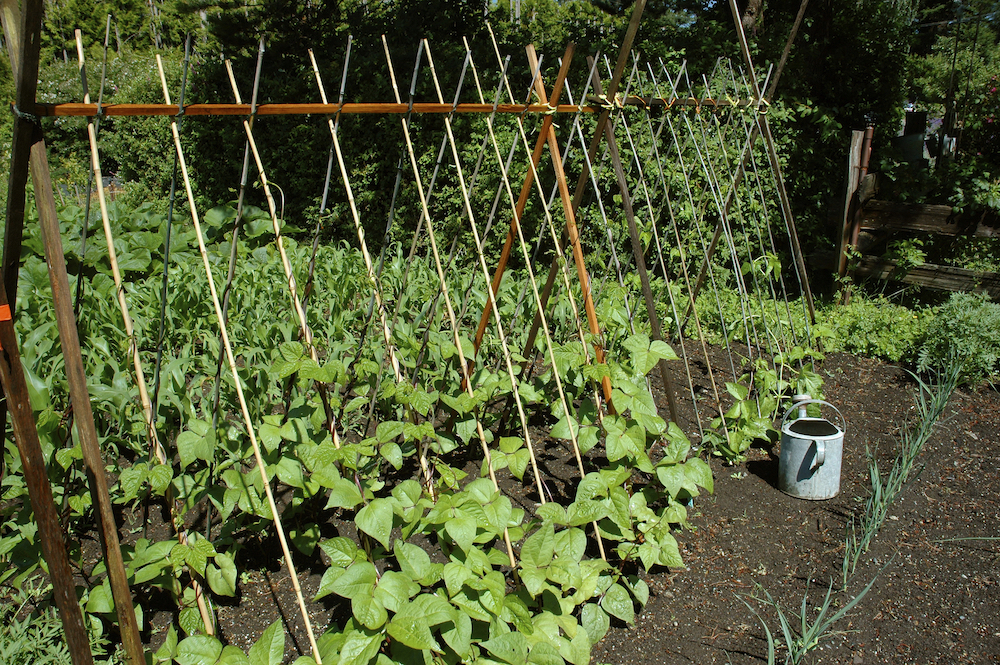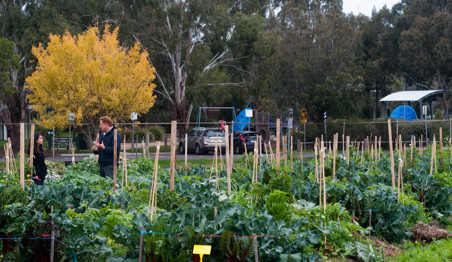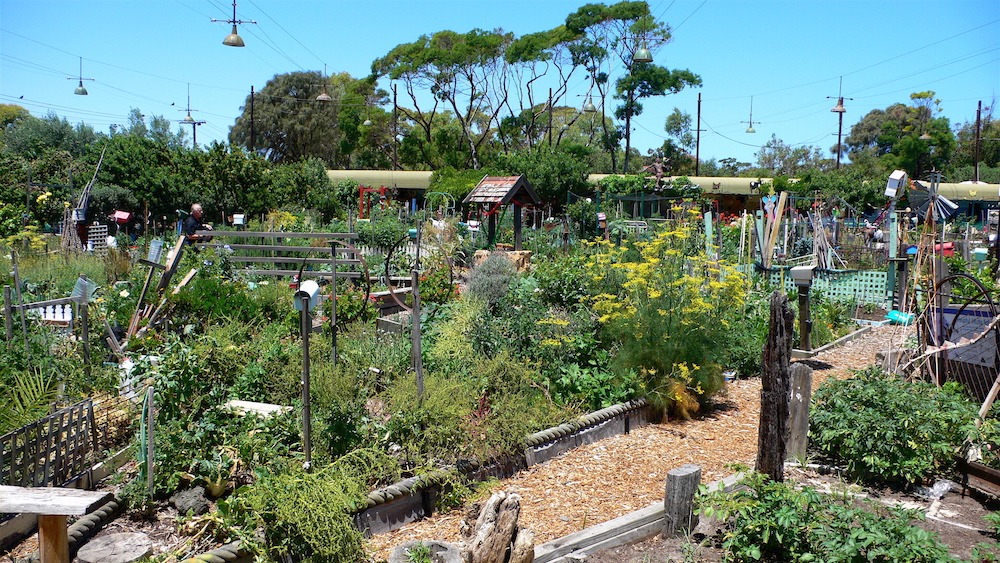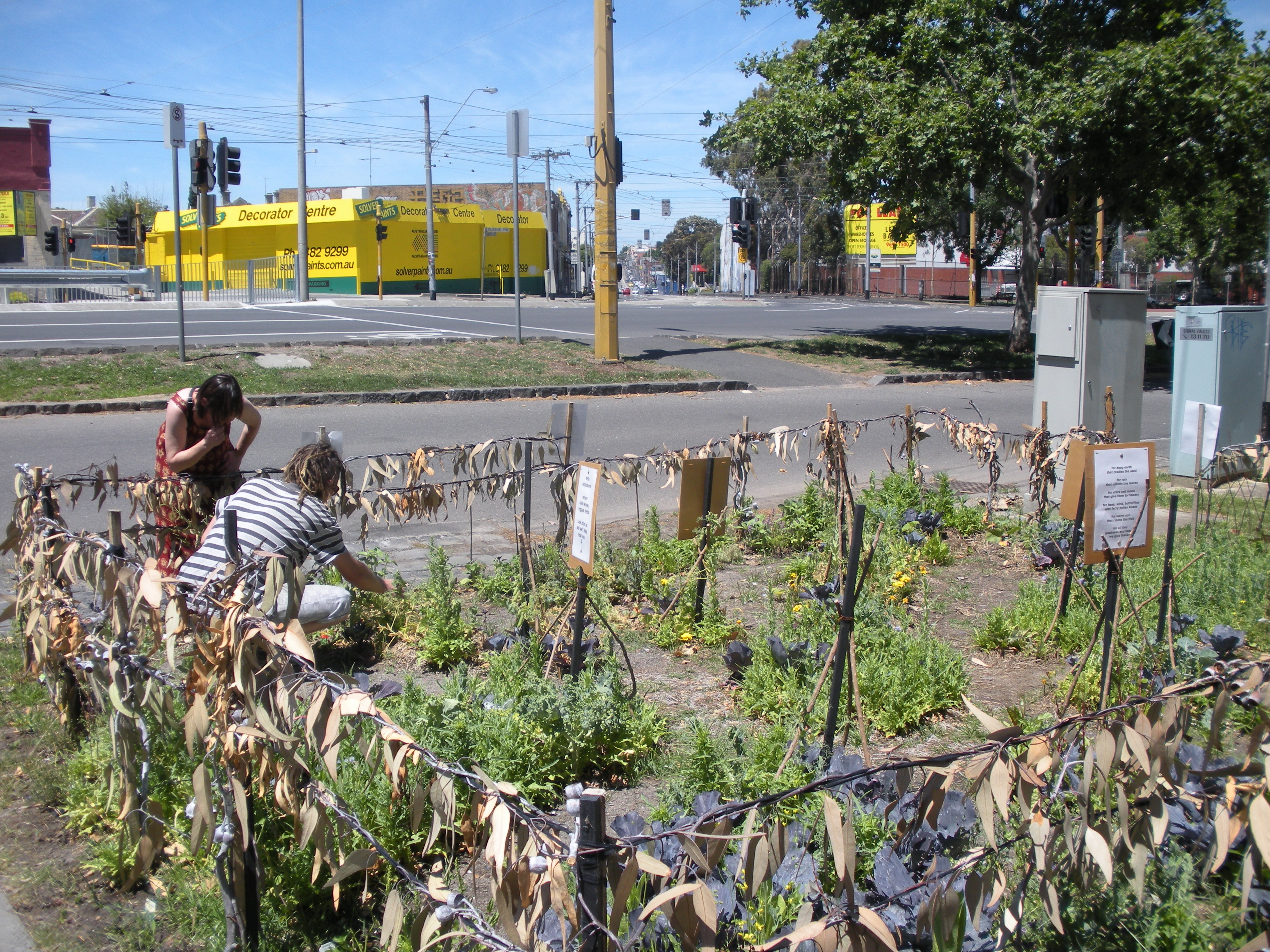Veggie gardens are so hot right now

City slickers are rediscovering the joy of getting their hands dirty
Published 9 October 2015
By Julianna Rozek, Master of Science (Botany), University of Melbourne
City slickers are going back to their agricultural roots in community gardens, pop-up veggie patches and roadside planters, which are sprouting up all over Melbourne.
University of Melbourne students are exploring this phenomenon by building and tending their own veggie plots at the University’s Burnley Campus. Master of Science in Botany student Julianna Rozek writes about her experience and the wider urban garden movement.

Getting our hands dirty
In the first week of March I arrived in Burnley with a diverse group of Masters students to a bare, freshly ploughed field. Over the next few hours we turned the field into a series of individual allotments.
This was our introduction to Food Production for Urban Landscapes, a new subject coordinated by Dr Chris Williams, Lecturer in Urban Horticulture at the University of Melbourne. The plots we just tilled and moulded would be our own for the next three months.
We planted broccoli, tomatoes, silverbeet and beans, and also Oca - a delicious root vegetable from the Andes and one of the “lost crops of the Incas”. This isn’t the only unfamiliar vegetable we encounter over the semester. Dr Williams is trialling plants such as taro, choko, yams and sweet potatoes to see how they perform in Melbourne through Burnley’s Novel Crops Project. As an added bonus, we got to taste test them all.
By the third week the irrigation was hooked up under a thick layer of mulch, and the carrot seeds were starting to sprout. The plots became our classroom - they demonstrated the scourge of tomato diseases, good and not-so-good insects, and the diversity of weeds waiting to invade.

Embracing the trend
Interest in gardening at the University isn’t just restricted to these subjects. Both the Parkville and Burnley campuses have student clubs interested in community gardening and horticulture.
In Melbourne, urban agriculture initiatives have been around for decades. Cultivating Community was established in 1998 to increase access to fresh food in low-income groups. They support 21 community gardens for public housing tenants, which provides opportunities to grow culturally appropriate food not found in supermarkets.
Newer projects include the Pop Up Patch on top of the Federation Square car park. Another is 3000 Acres, which works with private land owners and councils to unlock unused land for temporary raised beds.
These are just a few of the bigger initiatives. People are also taking over nature strips, growing more of their own vegetables at home or establishing community gardens, with local councils largely embracing the trend.
Health, food security and friends
When fresh food is accessible year-round in supermarkets, why are there so many urban veggie garden fans?
In many developing countries and struggling Western cities such as Detroit, urban agriculture is serious business – people grow food in order to survive or as an additional source of income. Perhaps one of the most successful urban agriculture systems is in Cuba, where in 2013 half the fruits and vegetables came from urban or suburban farms.
In wealthy countries such as Australia it isn’t just about growing food. Community gardens provide social and recreational activities for isolated groups and help build a sense of community in neighbourhoods. Compared to the usual grass-bench-tree combination found in parks, community gardens can be prettier and more functional.
Personally I think nothing beats weeding as a stress relieving activity.

the challenge of urban agriculture
The Australian backyard is shrinking, and higher density developments mean not everyone has access to their own gardens. Waiting lists in community gardens can be months or years. More council support for community gardens will help, as will innovative solutions such as the green roofs and walls currently being researched at the University.
Many of the more popular vegetables, like tomatoes, zucchini and peppers, grow in summer. Melbourne summers are dry, and are likely only going to get drier with climate change. Best-practice methods such as mulching and drip irrigation can reduce water use, but as droughts become more common we need other options besides tank and mains water. As part of the 10,000 Raingardens initiative, Dr Paul Richards, then a PhD student at Burnley, successfully used stormwater to grow vegetables.
A legacy of leaded petrol and lead-based paint means lead contamination is an issue in most urban backyards. VegeSafe is a program running at Macquarie University which aims to quantify just how bad the problem is by testing soil for free. In most cases, experts say city-grown vegetables are safe to eat in the quantities you would get from a casual veggie patch, but they do need to be carefully washed of dust.
Going back to my little plot, I can understand why people are so passionate about growing their own food. Tending my own little patch of dirt and understanding what made my plants thrive was the most rewarding experience of my whole university career. The carrots were the sweetest I’ve ever had, and though I got tired of eating broccoli and zucchini in every meal they were my own so I didn’t waste a single one.
While there are challenges to urban agriculture, I look forward to finding ways to overcome them. Everyone should have the opportunity to be delighted by a worm.
